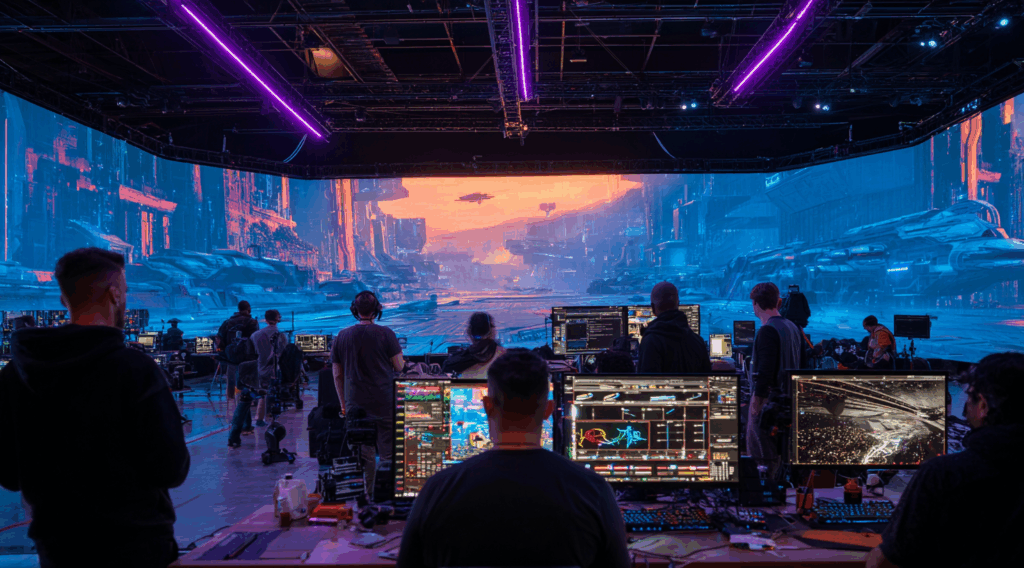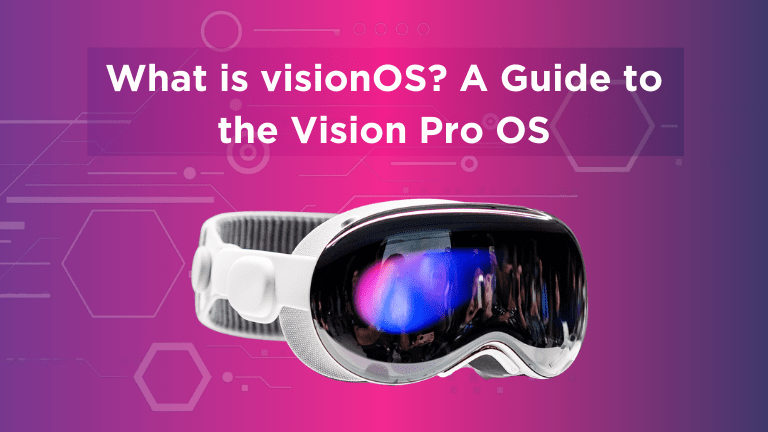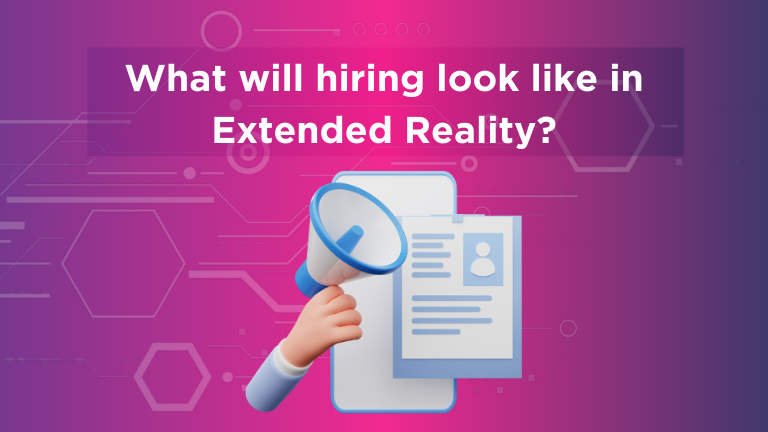Here’s what everyone’s getting wrong about AI adoption in creative and immersive technology: they’re treating the current wave of stalled pilots as evidence of AI pilot failure in creative industries. Industry reports show that organisations run an average of 24 GenAI pilots annually, yet only 3 progress to production. In creative agencies and immersive tech companies, this pattern is even more pronounced, with 42% of businesses scrapping the majority of their AI initiatives in 2025, up from just 17% six months prior.
But what if this apparent stagnation isn’t evidence of industry dysfunction, but of strategic discipline?
The prevailing narrative suggests that creative organisations are trapped in “pilot purgatory,” endlessly experimenting with AI-driven content generation, procedural environment creation, and intelligent virtual characters without ever achieving meaningful deployment. Critics point to abandoned projects: VR studios testing AI-generated environments that never make it to client work, creative agencies piloting AI copywriting tools that remain perpetually “under evaluation,” and post-production houses experimenting with automated VFX workflows that never replace human artists.
This interpretation overlooks an important aspect of how breakthrough technologies are actually integrated into creative workflows.
The Technical Reality Behind the Numbers
The current pilot landscape in creative tech reveals a more sophisticated story than simple failure rates suggest. When film studios experiment with AI-powered virtual production pipelines, they’re not just testing whether the technology works—they’re fundamentally reimagining decades-old creative processes.
Consider what’s actually happening in virtual production right now. Over 65 new AI-centric film studios have emerged since 2022. Many achieve £30 million production values from £10 million budgets through hybrid AI pipelines. These aren’t failed pilots; they’re complete workflow reinventions that required extensive experimentation to perfect.

The technical constraints explain why so many AI pilots appear to stall. Real-time ray tracing for AI-generated virtual environments demands computational resources that most creative studios aren’t equipped to handle at scale. AI-driven character animation systems need training datasets that simply don’t exist for many creative applications. These isn’t a sign of implementation failures, it’s infrastructure realities that take time to resolve.
An equally problematic issue is AI consistency across productions. Picture this: an AI-generated virtual set exhibits different lighting characteristics between scenes. The entire shoot becomes unusable. This isn’t about achieving perfection; it’s about maintaining reliability standards that professional productions demand. A virtual environment that looks stunning in isolation but can’t maintain visual coherence across a full project. This represents a fundamental scaling barrier that many pilots discover only during extended testing phases.
What looks like pilot stagnation often represents the necessary gap between proof-of-concept and production-ready infrastructure.
Why AI Pilots Fail More Often in Creative and Immersive Tech Industries
Creative and immersive tech sectors face unique challenges that make traditional pilot-to-production timelines misleading. Unlike enterprise software deployments, creative AI adoption touches every aspect of artistic workflow, intellectual property ownership, and client relationships.
When a creative agency pilots AI content generation, they’re not just evaluating efficiency gains; they’re navigating questions of authorship, creativity, and brand authenticity that have no clear precedents. The legal implications alone require careful consideration. Recent examples like studios grappling with AI-generated VFX ownership rights and agencies questioning whether AI-created immersive content can carry client branding demonstrate how quickly creative AI deployments create unexpected legal complexity.
The creative industry’s apparent caution around AI scaling reflects a deeper understanding of reputational risk that other sectors often overlook. A manufacturing company might accept a 5% error rate in AI-assisted quality control, but a creative agency cannot afford even one AI-generated piece of client content that violates intellectual property or misrepresents brand values.
An equally significant barrier is client readiness. Creative studios frequently develop sophisticated AI-enhanced experiences during pilot phases, only to discover that clients lack the internal capability to integrate or maintain them. The technology works perfectly, but client organisations aren’t prepared for the operational changes required. This creates a frustrating pattern where successful pilots stall not due to technical limitations, but because of institutional readiness gaps on the client side.
This isn’t pilot paralysis; it’s professional responsibility in an industry where reputation drives revenue.
The Infrastructure Investment Phase
What’s actually happening in many stalled AI pilots is foundational infrastructure development that doesn’t show immediate returns but creates future breakthroughs. How much does it cost to scale AI pilots in creative agencies? Creative studios are discovering that successful AI adoption requires completely reimagined data pipelines, new quality control processes, and hybrid human-AI workflows that take months to perfect.
Virtual production companies, for instance, are learning that AI-assisted environment generation demands real-time collaboration between technical artists, AI specialists, and traditional creatives. This is a workflow that didn’t exist 2 years ago. Building these frameworks takes time and looks unproductive from the outside; however, it’s essential groundwork for the next phase of creative AI adoption.
The emergence of specialised roles like AI art directors, Prompt Engineers for creative applications, and AI ethics leads in creative agencies signals an industry that’s building sustainable infrastructure rather than pursuing quick wins. Yet the talent shortage in these emerging roles creates a significant bottleneck. Many of these positions simply didn’t exist 18 months ago, and the professionals qualified to fill them are scarce. Companies find themselves training internal staff or competing for a tiny pool of experienced practitioners, further extending pilot timelines as teams develop the necessary expertise alongside the technology itself.
The Pattern Recognition Problem
Many creative AI pilots stall because they’re attempting to solve the wrong problems. Early adopters often focus on automating existing creative tasks rather than identifying uniquely AI-enabled creative possibilities. This approach almost always leads to disappointing results and abandoned pilots.
The breakthrough applications aren’t emerging from pilots that try to replace human creativity, but from those that explore genuinely new creative territories. More importantly, the most successful projects aren’t pursuing fully AI-generated content. Instead, they embrace AI-assisted human creativity.

AI concept art gets refined and developed by human artists. AI-generated base environments are sculpted and perfected by technical artists. These hybrid approaches preserve creative control while accessing AI’s generative power, creating a sustainable path between pilot experimentation and production deployment.
AI-generated procedural environments for VR experiences, real-time character behaviour adaptation in interactive media, and dynamic content personalisation for immersive marketing represent entirely new creative categories. These applications require different success metrics, longer development timelines, and completely new creative processes. This explains why they often appear as failed pilots when measured against traditional implementation criteria.
What the Data Actually Reveals
A closer examination of creative AI adoption reveals encouraging patterns beneath the apparent failure rates. While many individual pilots are abandoned, the overall investment in creative AI infrastructure continues to grow. Creative software companies are rapidly adding AI capabilities into professional tools, suggesting that the industry is preparing for widespread adoption even as individual pilots struggle.
The 26% of companies that have successfully moved beyond AI proof-of-concepts share common characteristics: they’ve invested in cross-functional teams, established clear creative quality standards for AI outputs, and developed iterative refinement processes that treat initial pilots as learning opportunities rather than deployment attempts⁵.
More tellingly, these successful adopters report that their “failed” pilots provided crucial insights that informed their eventual breakthroughs. This suggests that the high abandonment rate might actually be evidence of thoughtful experimentation rather than poor execution.
The Real Timeline for Creative AI
The creative industries operate on different timelines than technology sectors, and AI adoption will follow these industry rhythms rather than venture capital expectations. Creative projects often span months or years, client relationships develop over decades, and artistic reputations take careers to build.
This context suggests that what appears to be pilot stagnation might actually represent the natural adoption curve for creative technology. The creative professionals successfully adopting AI aren’t rushing to deploy every promising pilot; they’re carefully selecting applications that improve rather than compromise their creative vision.
How to Tell if Your AI Pilot is Strategically Paused or Actually Stalled
Given the complexity of creative AI adoption, how can industry leaders distinguish between productive strategic pauses and genuine stagnation? How long should AI pilots typically take in immersive technology projects? Here are key indicators:
Strategic Pause Indicators:
- Clear learning objectives from each pilot, with documented insights being applied to future initiatives
- Active infrastructure development happening alongside pilot work: data pipelines, quality processes, team training
- Specific technical or client readiness milestones identified as prerequisites for scaling
- Cross-functional teams gaining expertise and developing new collaborative workflows
Actual Stagnation Warning Signs:
- Multiple pilots running without clear success criteria or learning plans
- Repeated similar experiments. No building on previous insights.
- No investment in supporting infrastructure or team development
- Client readiness consistently overlooked in pilot design
- Absence of specialised AI talent development or acquisition strategies
The distinction often comes down to intentionality: strategic pauses involve deliberate capability building, while stagnation reflects uncertainty about next steps.
Implications for the Next Phase
The current pilot landscape indicates that creative AI adoption is entering a crucial maturation phase. The experimental period is revealing which applications deliver genuine creative value and which are merely technological novelties.
Companies that emerge successfully from this phase will likely be those that treated their pilots as research investments rather than deployment failures. They’re building the infrastructure, workflows, and expertise that will allow sophisticated AI adoption when the technology and creative processes fully align.
The next 18 months will likely see fewer but more sophisticated AI implementations in creative industries, as companies move from broad experimentation to focused deployment of proven applications.
TL;DR: The high AI pilot abandonment rate in creative tech isn’t market failure. It’s necessary infrastructure development and risk management in an industry where reputation and creativity are paramount. The companies that survive this experimental phase are building the foundation for the next creative revolution, not failing to implement today’s technology.




